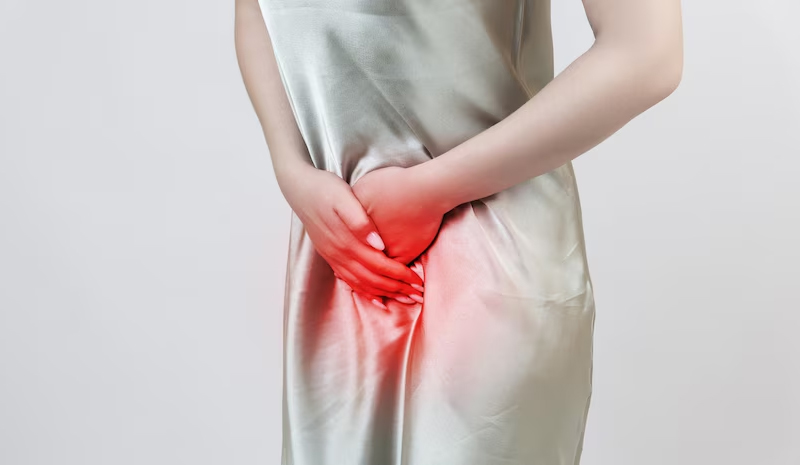Anticipating pain while using tampons or the idea of sexual intercourse can be distressing and confusing. For many, this pain can be linked to a condition known as penetration phobia or genitopelvic pain/penetration disorder.
Understanding the underlying causes is essential for finding relief and improving quality of life. Here are five key reasons why tampons and sex might be painful, and shedding light on penetration phobia.
1. Vaginismus
Understanding its meaning:
Vaginismus is a condition where the muscles around the vagina, belly, leg, and back, involuntarily tighten. This makes any form of penetration, including tampons or intercourse, painful or even impossible despite the willingness of the woman. This muscle spasm is a reflex reaction, often rooted in anxiety or fear related to penetration.
Causes of Vaginismus:

- Psychological Factors: Fear of pain, past traumatic experiences, or anxiety about sex can contribute to vaginismus.
- Medical Conditions: Infections, endometriosis, or other gynecological issues can exacerbate muscle tightness.
- Lack of Education: Inadequate sexual education can lead to fear and misconceptions about penetration.
Vaginismus and Dyspareunia: Understanding the Connection
Vaginismus and dyspareunia are often used interchangeably, but they represent different conditions, although they are closely related. Let’s understand the difference between the two.
-
Dyspareunia
is a general term encompassing any pain experienced during sexual intercourse.
This pain can be superficial, occurring at the entrance of the vagina, or deep, felt further inside. The causes of dyspareunia are diverse, ranging from physical conditions like endometriosis, infections, and hormonal imbalances to psychological factors such as anxiety and trauma. -
Vaginismus
is a specific type of dyspareunia characterized by involuntary muscle spasms of the pelvic floor that prevent or significantly hinder vaginal penetration. Unlike dyspareunia, which can have various underlying causes, vaginismus is primarily a psychological response to the fear of pain.
Vaginismus Treatment:
Treatment and management of vaginismus often involves a combination of therapy that includes topical creams, counselling, physical therapy, botox injections, and gradual desensitization exercises to help relax the pelvic floor muscles.
2. Insufficient Lubrication
Role of Lubrication:
Adequate lubrication is crucial for comfortable penetration. Lack of natural lubrication can cause friction and pain during tampon insertion or intercourse.
Factors Leading to Insufficient Lubrication:
- Hormonal Changes: Menopause, childbirth, or certain medications can reduce natural lubrication.
- Lack of Arousal: For sexual intercourse, adequate foreplay is necessary to stimulate natural lubrication. Further, no or low sexual excitement or pleasure during sexual activity in almost all situations might also add to the absence of arousal.
- Dehydration: Not drinking enough water can affect overall hydration, including vaginal moisture.
How to increase lubrication:
Using water-based lubricants can significantly reduce pain and make penetration more comfortable.
Staying hydrated and addressing hormonal imbalances with a healthcare provider can also help.
3. Pelvic Floor Dysfunction
Understanding Pelvic Floor Dysfunction:
Pelvic floor muscle dysfunction is the inability to correctly tighten (contract) and relax the muscles in the pelvic floor. The pelvic floor muscles are those that support the bladder, bowel, and reproductive organs.
Dysfunction in these muscles can cause pain during penetration.
Causes of Pelvic Floor Dysfunction:
-
Chronic Stress:
Stress and anxiety can lead to long-term (chronic) tension in the pelvic floor muscles.
-
Physical Trauma:
One of the main reasons is childbirth at early age, multiple childbirth through normal (vaginal) delivery, or pelvic injury, surgery can also damage these muscles.
-
Infections:
Chronic urinary tract infections or other pelvic infections can lead to muscle dysfunction.
Managing Pelvic Floor Dysfunction:
Physical therapy, particularly with a specialist in pelvic health, can help strengthen and relax these muscles. Mindfulness and relaxation techniques can also reduce tension.
4. Psychological Factors
Impact of Psychological Factors:
Mental health plays a significant role in how the body responds to penetration. Fear, anxiety, and past traumas can manifest physically, causing pain.
Common Psychological Contributors:
-
Sexual Trauma:
Past sexual abuse or traumatic experiences can create a lasting fear of penetration.
-
Body Image Issues:
Negative perceptions about one’s body can lead to anxiety during sexual activity.
-
Relationship Stress:
Issues with a partner can create tension and fear, making penetration painful.
Approaching Psychological Factors:
Counselling or therapy with a mental health professional can help address these issues. Building a supportive and understanding relationship with a partner is also beneficial.
5. Medical Conditions
Influence of Medical Conditions:
Various medical conditions can directly cause pain during penetration.
Common Medical Conditions:
-
Endometriosis:
This is a condition where uterus-like tissue grows outside the uterus.
These misplaced tissues can form cysts and scar tissue, causing pelvic pain and tenderness. During penetration, these inflamed areas can be triggered to make it worse, leading to significant discomfort. The pain is often deep and aching, and may worsen around menstrual periods. -
Vulvodynia:
is a chronic pain condition or discomfort affecting the vulva pain i.e. around the opening of the female genitalia (vulvar region) without an identifiable cause.
This pain can range from being constant or intermittent to burning, stinging, or raw. Any form of penetration, even tampon insertion, can be excruciating for those with vulvodynia. -
Infections:
These include yeast infections, bacterial vaginosis, or sexually transmitted infections that can cause pain. Further, infections such as sexually transmitted infections (STIs) or urinary tract infections (UTIs), can cause inflammation and irritation in the genital area. These infections can create discomfort and pain during penetration.
Additionally, pelvic inflammatory disease (PID), a serious infection of the female reproductive organs, can also lead to painful intercourse.
Treatment for Medical Conditions
It’s important to note that these conditions often coexist or interact, making diagnosis and treatment more complex. Consulting a fertility specialist for proper diagnosis and treatment is vital.
After proper diagnosis, your fertility doctor will advise you on appropriate treatment. These include medications, surgical options, or lifestyle changes that can help manage symptoms and reduce pain.
Conclusion
Pain during tampon use or sexual intercourse, although not a casual subject to open talk about, but is also not something to be ignored. It can stem from various physical and psychological factors, each requiring a different approach to treatment.
If you experience pain during penetration, get in touch with NU fertility specialists today to explore your options and find relief.
References:
Healthline: Fear of sex
NCBI: Female sexual dysfunction
Healthline: Endometriosis and Vaginismus
NCBI: NCBI Books



